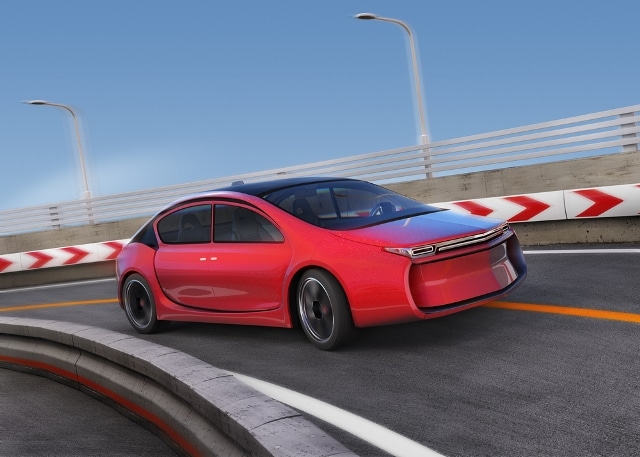May 3 2016
Researchers from KU Leuven have analyzed how a self-driving car’s image-recognition technology reacts to a blurred shape appearing unexpectedly on the road. The team have pointed out that machines, just like human beings, are capable of learning to react to unfamiliar objects.
 (Credit: KU Leuven)
(Credit: KU Leuven)
Imagine going home in a self-driving car in the midst of a heavy rainfall and suddenly a blurred image emerges on the road. In such a situation, the point to ponder on is whether the car will have to hit the brakes despite the fact that the cars behind will crash or just continue driving.
In a similar situation, human beings will be able to explain the difference between an unfocused cyclist who is suddenly curving, and road-side waste carried by the wind. Response to this is mostly based on intuition. The blurred shape is not very clear, but appears to be like a human being instead of a paper bag.
In this case, the point to consider is the reaction of the self-driving car, and whether a machine trained to identify images will be capable of recognizing the blurred shape. KU Leuven researchers, Hans Op de Beeck and Jonas Kubilius, agree that this concept of the machine recognizing blurred images is possible.
Current state-of-the-art image-recognition technologies are taught to recognize a fixed set of objects. They recognize images using deep neural networks: complex algorithms that perform computations somewhat similarly to the neurons in the human brain. We found that deep neural networks are not only good at making objective decisions (‘this is a car’), but also develop human-level sensitivities to object shape (‘this looks like …’). In other words, machines can learn to tell us what a new shape – say, a letter from a novel alphabet or a blurred object on the road – reminds them of. This means we’re on the right track in developing machines with a visual system and vocabulary as flexible and versatile as ours.
Jonas Kubilius, KU Leuven
The questions arising at this juncture is whether human beings in the future will safely hand over the wheel. In response to this, Kubilius says;
Not quite. We’re not there just yet. And even if machines will at some point be equipped with a visual system as powerful as ours, self-driving cars would still make occasional mistakes – although, unlike human drivers, they wouldn’t be distracted because they’re tired or busy texting. However, even in those rare instances when self-driving cars would err, their decisions would be at least as reasonable as ours.
Jonas Kubilius, KU Leuven